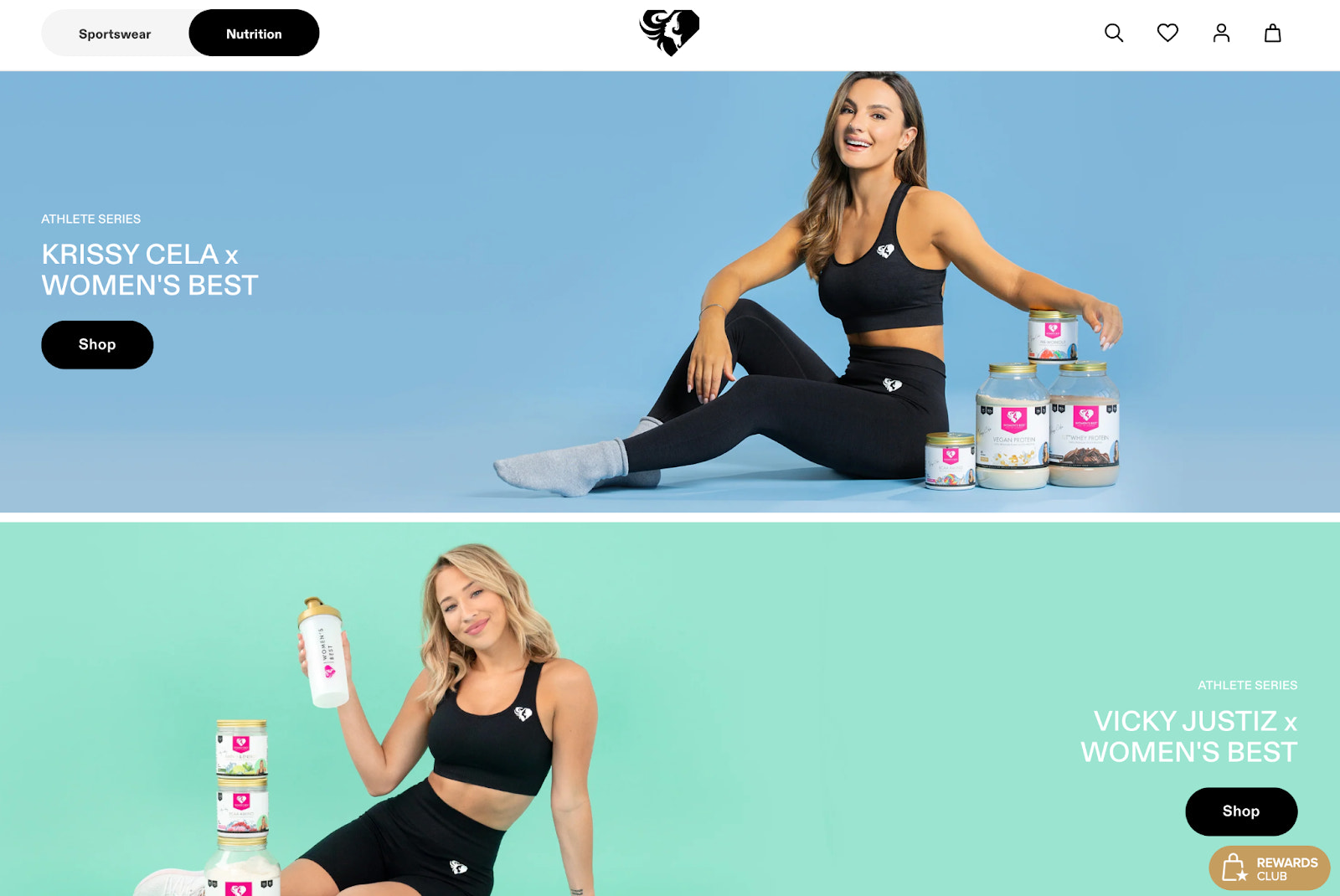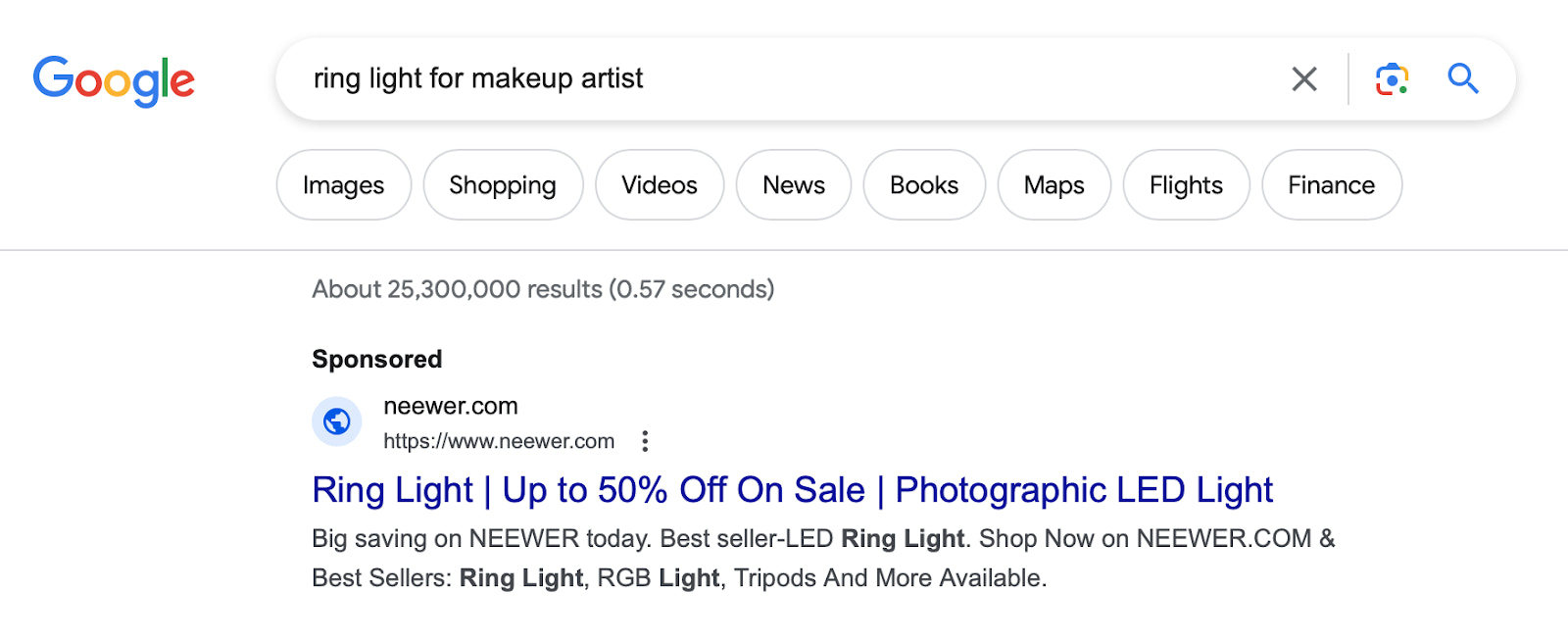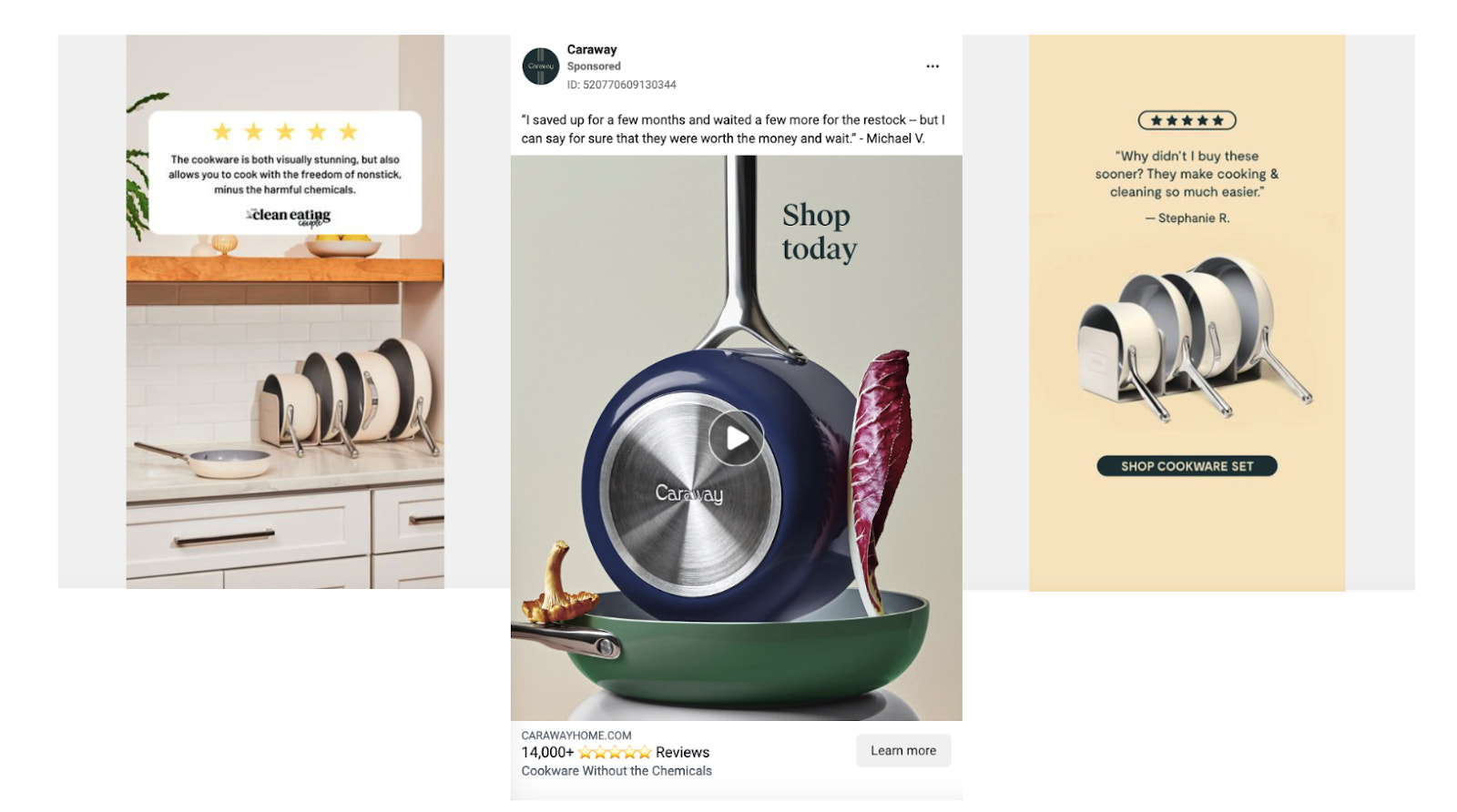Selling products people want, enjoy, and recommend is a crucial part of ecommerce success. But it’s only one piece of the puzzle, because to sell those products, people first need to know they exist.
“Build it and they will come” isn’t a viable way to run a business. The world of online shopping is crowded, and if your target customers can’t find your business, they’ll definitely find someone else’s to achieve the same thing.
That’s why you need a digital marketing strategy—to reach the people who need your products and become their brand of choice. Whether you’re a brand new ecommerce business or looking to solidify your digital marketing strategy, this guide is for you.
Table of Contents
What is a digital marketing strategy?
A digital marketing strategy is a comprehensive plan that outlines how a business will use digital channels and platforms to reach and convert its target audience into customers.
It’s focused on digital channels like social media and email marketing, but it should align and work in sync withoffline marketingcampaigns like trade shows, billboards, and direct mail.
Think of a digital marketing strategy as the roadmap that guides your digital marketing efforts. It provides direction and clarity, helping you to effectively connect with your target audience, enhance brand visibility, and hit your goals as an ecommerce business.
A digital marketing strategy supports both specific product launches and everyday sales efforts and goals.
Digital marketing strategy vs. digital marketing tactics
Terms digital marketing strategy and digital marketing tactics are often used interchangeably, but they have distinct meanings.
- Digital marketing strategyis the overarching plan that guides the implementation of various digital marketing tactics.
- Digital marketing tacticsrefer to the specific actions and techniques used to execute the strategy. Examples include content marketing, social media ads, and influencer partnerships.
For example, running ads on Instagram is aninternet marketingtactic, and the decision to invest in social media advertising—and why—is part of a digital marketing strategy.
A digital marketing strategy is the big picture, while digital marketing tactics are the individual puzzle pieces that come together to achieve the desired results.
Owned, earned, and paid media in a digital marketing strategy
A successful digital marketing strategy makes the most of three types of media:
- Owned media:Channels and formats you create, publish, and fully control, like blog posts, YouTube videos, product pages, and social media posts.
- Earned media:Unpaid coverage of your business you haven’t created or paid for, like a press mention in a gift guides.
- Paid media:Content you pay to place in front of your target audience, like paid sponsorships or paid ads on social media platforms and search engines.
Combining these three types of content helps you meet your target audience at every stage of their customer journey, from casual browsing to dedicated research and making a purchase decision.
Types of digital marketing tactics
- Search engine optimization (SEO)
- Content marketing
- Email marketing
- Affiliate marketing
- Influencer marketing
- Social media marketing
- Search engine marketing
Digital marketing tactics define the channels, tools, and formats you’ll use to implement your strategy. An effective digital strategy will often contain multiple tactics that support each other and maximize results. Digital marketing tactics you can implement include:
Search engine optimization (SEO)
Search engine optimization (SEO) is the process of optimizing your ecommerce website to show up in relevant search engine results. “SEO is an excellent form ofinbound marketing, where the consumer has a need and finds you for the solution,” says Greg Bernhardt, a SEO senior specialist at Shopify.
“SEO是对通讯定位web内容unicate the relevance and value of your offering to search engines, who can then better pair the search they receive with the solution you offer.”
The three main areas of SEO are:
- On-page SEO:Ensuring all written content on your website (like page titles, product descriptions, and blogs) are rich with search terms, i.e. keywords.
- Off-site SEO:Building external authority for your product or brand, i.e., when sources like publications and bloggers, link back to your product or services.
- Technical SEO:The technical aspects to your website to rank, from site loading speed to how your product pages are indexed.
For example, Kim Kardashian’s brandSKIMSranks at the top of the search results for the search term “long slip dress.” On-page keywords, off-page coverage, and a solid technical foundation all contributed to the high search presence of the brand.

The key toecommerce SEO successis the combination of keyword research, competitive analysis, active link building, and image optimization—and all of it on a fast-loading website search engines can easily read and index.
Some SEO tactics are more easily executed in-house, while some benefit from external expertise. If these tactics seem like a good fit for your business, learn more with ourguide to SEO marketing.
Content marketing
Content marketing is a strategic marketing approach you can use to meet your target audience—your potential and existing customers—where they are by creating high-quality content that fulfills their needs and answers their questions.
This content can include shopping guides and product demos; live webinars; in-depth articles about your products, ingredients, or processes; and entertaining social media content.
For example, the modular sofa companySnugcreated a detailedsofa buying guide, a library ofassembly guides, and agallery of imagesto inspire those looking for interior design ideas. These resources meet sofa buyers at every stage of their purchase journey, from research to consideration and decision.

Content marketing isn’t a one-size-fits-all solution—a different online store might see greater benefits from YouTube videos and a glossary of terms related to the industry. Understanding your target customer is essential for your content to hit the mark.
Email marketing
Email marketing is the practice of acquiring your customers’ email address and then emailing them regularly to build a connection with them, create value, and promote product launches and promotions.
Great email marketing starts with a strategy tocaptureemails. Although you can capture them at the point of checkout, you’ll ultimately want to capture emails earlier on in a customer’s journey. That’s why ecommerce sites often offer discounts to first-time buyers in exchange for their email.
You can use email marketing for an automated series of emails (known asmarketing automation) or to send timely emails at a regular cadence, like a monthly newsletter or a seasonal campaign. Some types of ecommerce emails include:
- New product announcements
- Behind-the-scenes updates
- Cart abandonment reminders
- Call for product reviews
- Replenishment reminders
- Discounts and other limited time promotions
Curlsmith, a haircare brand focused on curly hair, offers a curl quiz to help visitors understand the needs of their hair and choose the right products. At the end of the quiz, visitors can enter their email address to receive results, which Curlsmith then uses to send educational videos, guides, and recommendations.

Affiliate marketing
Affiliate marketinginvolves paying people—affiliates—a commission when they refer new customers to your business. The commission is usually a percentage of sale (e.g., 15% of their first order) or a fixed amount (e.g., $10 per sale).
Many brands offer affiliate programs open to anyone in their community of customers and supporters, regardless of the size of their social media following. For affiliates, it’s an opportunity to make money recommending the products they love, and ecommerce businesses get a chance to continually reach new audiences.
Brands can also provide affiliate relationships to industry publications and grow their influence by being featured in them, likeThe Sprucefor home goods brands orVerywell Healthfor health and fitness companies.
Here’s the affiliate page by the superfood latte companyBlume, which usesShopify Collabsto connect with affiliates:

Find influencers to promote your products with Shopify Collabs
Install the Shopify Collabs app today to partner with creators, promote your products, reach new customers, grow your sales, and track affiliate campaign performance all from Shopify admin.
Install the Shopify Collabs appInfluencer marketing
影响力营销类似于从属标ob欧宝娱乐app下载地址记ting in that it focuses on incentivizing others to share your brand and products. However, influencer marketing focuses on partnering with individuals with an audience on social media, YouTube, an email list, a blog, or a combination of these.
An influencer’s audience can be as small as 1,000 people—these influencers are called nano-influencers—or as big as tens or hundreds of thousands of followers. The more important part is to select creators whose focus, style, and values align with the brand’s.
This form of marketing can be highly effective because influencers build audiences who have a high level of trust in their recommendations. This also means influencers tend to be more selective about what brands they work with, and want to feel a personal connection to them.
Brands can partner with influencers on one-time sponsored posts, long-term campaigns, and even product development likeWomen’s Best campaignswith selected athletes.

Social media marketing
Social media marketing is a form of online marketing that leverages digital channels like Instagram, TikTok, Pinterest, X (formerly Twitter), and Facebook to reach your target audience. There are two main avenues you’ll explore when planning yoursocial media marketing strategy: organic and paid.
Organic social media marketing means growing your following without paying for reach. This involves sharing helpful, engaging, or user-generated content from your company’s account. With the rise in recommendation-based social media, such as TikTok, this has become easier than before, because social media algorithms often show your content to people who aren’t already following you. However, it still requires a heavy investment in content creation to succeed.
Paid social media marketingis based on investing a budget to reach people through ads. It’s a form of digital advertising. The benefits of this include more custom, specific audience targeting, less need for new content, and the ability to serve content with calls to action like “Shop now” or “Claim your discount.” The drawback, of course, is you have to pay for people to see your ads—and those costs can add up.
The greatest advantage of paid social ads is the ability to learn from them and optimize them for maximum ROI. For example, clothing brandBaltic Bornexperimented with adding music to its Instagram ads and saw ajump in conversion ratesand return on ad spend.

Search engine marketing
Search engine marketing, also called SEM or pay-per-click (PPC), involves paying to appear in search results.
This type of paid advertising can be extremely effective. Unlike tactics that require educating people about why they need your product (known as demand generation), PPC advertising reaches people who are actively searching for it (known as demand capture).
Instead of waiting for your content to rank highly in organic search, you can use a platform like Google Ads to reach the right people at the right moment.
For example, photographic equipment companyNeewershows up at the top of the “ring light for makeup artist” Google search results, thanks to its well-targeted paid ad. This can shorten the journey a potential customer takes from product research to making a purchase.

How to create a digital marketing strategy in 6 steps
- Define and understand your target audience
- Set your marketing goals
- Establish your budget and tech stack
- Select the marketing tactics to attract, nurture, and convert customers
- Focus on your differentiators
- Define a way to track results
Next up is building an online marketing strategy that will bring you results, like reach, revenue, and a healthy business. It’s easy to feel overwhelmed by dozens of digital marketing methods, channels, content formats, and directions you can take.
That’s why we’ve boiled this process down to six steps you can follow tocreate a successful digital marketing strategyplan.
1. Define and understand your target audience
谁一个re the people who will repeatedly buy from you, rave about you to their friends, and share your business and your products on social media?
In other words: Who is your target audience?
Knowing this will allow you to choose the right digital marketing channels, craft compelling messages, and market your online store in a way that attracts, converts, and resonates with customers.
Understanding yourtarget marketmeans you know its demographics, interests, pain points, values, opinions, shopping habits, and how they consume the content they care about.
Let’s look at a few examples of audiences different brands appear to target based on their marketing content and mission statements:
ColourPop
- Makeup enthusiasts looking for affordable, trendy, and high-quality cosmetics
- Those interested in cruelty-free and vegan beauty products
- Social media users, especially those who follow beauty influencers on platforms like Instagram and YouTube
Gymshark
- Fitness enthusiasts
- Gym-goers seeking stylish, performance-oriented workout attire
- People who trust fitness influencers, particularly on platforms like Instagram and YouTube
- Both casual gym-goers and professional athletes
Kith
- Urban fashion enthusiasts
- Those seeking premium streetwear and lifestyle brands
- Sneakerheads and those into sneaker culture
- Individuals valuing exclusivity and limited-edition releases
Bulletproof
- Health and wellness enthusiasts
- Individuals interested in biohacking and optimizing cognitive performance
- Coffee drinkers seeking a boost in energy and mental clarity
- Those on ketogenic or paleo diets
Allbirds
- Environmentally-conscious consumers
- Individuals seeking comfortable, minimalist footwear
- Those valuing sustainability and ethically sourced materials in their purchasing decisions
- Urban dwellers looking for versatile footwear for both casual and slightly formal settings
To determine this for your own brand, use methods like audience surveys, focus groups, online forums, customer reviews, and third-party data to answer questions like:
- Why did they choose to buy a specific product (e.g., yours or a competitor’s)?
- What was happening in their life around this purchase?
- 他们用来发现这个专业哪些渠道duct?
- What qualities do they look for in brands they purchase from?
- What is their education level?
- What is their income level?
- What is their marital status?
- Where are they located and what language do they speak?
- How do they spend their free time?
Document these insights to provide direction for the next steps of your digital marketing strategy.
2. Set your marketing goals
Business goalsand marketing goals help you eliminate distractions and noise from a dozen directions you could take.
Your goals might be to:
- Go viral on TikTok
- Win more revenue compared to last month
- Grow website traffic
These look like valid goals, but they aren’t specific enough to help you choose marketing activities that will get you there.
Instead, set SMART goals. SMART stands for specific, measurable, achievable, relevant, and time-based. Here are some examples of SMART goals that drive an effective digital marketing strategy:
- Grow email list to 1,500 subscribers in Q2 by offering a free download of the buying guide.
- 增加有机流量30%在未来6 months by publishing three search-optimized blog posts per month.
- Reach 1,000 target audience members on TikTok per month by publishing one video every day.
If you’re starting your marketing strategy from scratch, you can begin by focusing on short-term goals—between one and six months. This lets you get your business off the ground. Once you’re established, you can use what you know about your business and your industry to set long-term goals for the business.
3. Establish your budget and tech stack
There’s no perfect figure or percentage you should spend on marketing.Gartnerreports the average marketing budget was just under 10% of total business revenue in 2022, but your budget may be higher or lower based on your revenue, your goals, and funding.
When considering yourmarketing budget, consider spending on:
- Marketing expertise:in-house marketers, freelance consultants, marketing agencies
- Tools:keyword research, social media management, marketing automation, email service provider, etc.
- Content creation:photo or video equipment, studio costs, etc.
- Campaign-specific costs:ad costs, influencer fees, etc.
Use this list to define your initial budget. It will change based on your results, revenue, time of the year and your goals for that period. A ballpark figure will help you make decisions focused on the results you want.
4. Select the marketing tactics to attract, nurture, and convert customers
This step is about defining exactly which digital marketing tactics and activities you’ll spend your time and budget on.
The key is to look at your entire sales and marketing funnel rather than just a part of it. It’s easy to make the mistake of prioritizing the top of the funnel—growing your site traffic and social media viewers—while neglecting the process of turning those visitors into customers.
Choose a marketing tactic for each stage of the customer journey:
- Awareness. How will potential customers find out you exist? Tactics include SEO, influencer marketing, and organic social media.
- Consideration. How will you convince casual visitors to consider buying from you? Potential tactics include email newsletter and retargeting ads on social media.
- Decision. How will you convert people into customers? Potential tactics include email marketing automation and search engine marketing.
This is the key to a healthy marketing operation—it continually brings new eyes to your businessandnurtures them into customers.
5. Focus on your differentiators
What makes you stand out from your competitors? What is yourunique selling proposition(USP)? These questions are important, because whatever type of products you sell, others are already selling them, too.
Sustainable fashion. Men’s wallets. Age-appropriate toys for babies and toddlers. Natural skincare. None of it is a novel, unique idea.
Yet, brands like Allbirds, Ridge, Lovevery, and Three Ships Beauty thrive in their respective categories:
- Allbirdswent all-in with PR, affiliates, and video marketing from its beginning to position itself as a brand of comfort and sustainability
- Ridgeuses a bold, sassy tone on social media to stand out from other luxury brands that tend to use a more serious, toned-down approach
- Loveveryoffers a subscription that includes toys based on a child’s developmental stage
- Three Shipsprioritizes transparency in product ingredients through resources like its ingredient glossary

Double down on what makes your approach unique when it comes to solving a problem or meeting a need. Your brand’s mission, vision, values, expertise, and experience all count as your differentiators—make the most of them.
6. Define a way to track results
Select a few metrics you’ll regularly monitor to track your success. Based on these metrics, you can tweak a tactic that is showing some potential, expand it if it’s bringing significant results, or drop it if it’s not paying off.
Start by listing theecommerce metricsthat represent the overall success of your store, like sales conversion rate, average order value, customer lifetime value, and returning customer rate.
Then, specify the metrics you’ll track based on your selected tactics, like:
- SEO: monthly search traffic, backlinks, click-through rate
- Content marketing: pageviews, time on page, conversion rate
- Email marketing: open rate, click-through rate
- Affiliate and influencer marketing: impressions, discount code uses, engagement rate
- Social media marketing: views, comments, click-through rate
- Search engine marketing: impressions, click-through rate, cost-per-click, conversion rate
No need to overcomplicate this step—start simple by tracking the numbers that can inform your next marketing decisions. You can always build your way up to more metrics when you get the hang of it.
Examples of successful digital marketing strategies
Ready to build your strategy? Check out these three effectivedigital marketing strategies as inspiration:
Alo Yoga
Founded in 2007,Alo, a yoga wear and accessories company, reportedly earned more than$1 billionin revenue as of 2022. Here’s what makes up its digital strategy:
- Content marketing就像一个有价值的内容library of yoga posesand guides on mindfulness, movement, and lifestyle.
- Partnershipswith yogis, fitness professionals, and influencers through thePro Program.
- Organic social media photos and videoson Instagram (six accounts with over five million combined followers) and TikTok.
- User-generated contenton Instagram and TikTok, likethis videothat showcases a full Alo yoga outfit.
- Email marketingthat nurtures both new customers andexisting loyalty program members.

ILIA Beauty
ILIA Beautyis a clean beauty and cosmetics brand that sawexponential growth in 2020and reportedly earned$100 million in salesin 2021. Here’s what goes into itsecommerce marketingefforts:
- Organic social media photos and videoson TikTok and Instagram, with a focus on a clean aesthetic on Instagram.
- User-generated contenton Instagram, likethis videoof a makeup routine.
- Paid adson social media channels that target potential first-time customers.
- Referral programsthroughaffiliatesand arefer-a-friend option.
- Email marketingfocused on valuable tips and product recommendations with a distinct color palette and rich product photography.

Caraway
Carawaysells nonstick, non-toxic cookware, bakeware, and home goods. It was founded in 2019, and reportedly grew sales by 300% in 2022 compared to the year prior, whileraising $35 millionin the same year.
Here how its digital marketing strategy supported this growth:
- SEOrankings in top spots for search terms like “is ceramic non stick safe” and “ceramic vs stainless steel cookware.”
- Organic social mediafocused on educational videos and captions, likethis videoabout toxic kitchen items.
- Partnershipswith influencers (likeinterior designersandfitness enthusiasts) and celebrities (likeTan France).
- Paid adson social media that feature individual products, customer reviews, or influencers.

Evolving your digital marketing strategy
An intentional, well-defined digital marketing strategy is a superpower. It gives everyone in your company the foundation to prioritize marketing activities that will take your online store to new heights and bring results time and time again.
Remember: digital marketing is a long-term game, so stay consistent, keep your ear to the ground for trends and changes, adapt if and when you need to, and be patient as you work toward achieving your business goals. Your effort will pay off.
Ready to create your business? Start your free trial of Shopify—no credit card required.
Digital marketing strategy FAQ
What are the 7 Cs of marketing?
The seven Cs of digital marketing are customer, content, context, community, convenience, cohesion, and conversion. This framework is the foundation of every stage of the customer journey, from awareness and discovery through to consideration and decision, and it helps digital marketers stay focused on generating relevant results for the business.
Why is an example of a digital marketing strategy?
An example of a digital marketing strategy is a fashion brand that markets its company and products with:
- Search engine optimization by publishing outfit-building tutorials targeting keywords like “capsule wardrobe guide” and “summer outfit ideas”
- 与著名的伙伴关系iliates and influencers, whose content the brand then reshares on its social profiles
- Email marketing that rewards first-time visitors with a discount, and existing customers with unique offers on their wishlist products
- Paid ads that target previous website visitors and show them the products they viewed, but haven’t purchased
This strategy covers all parts of the customer journey, from people who have never heard of the brand through to loyal customers.

